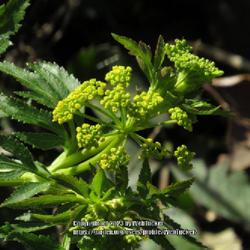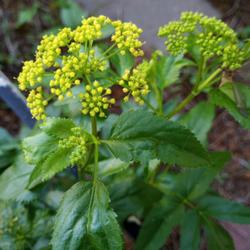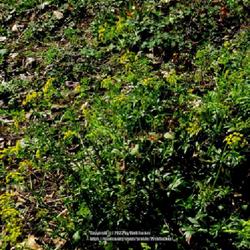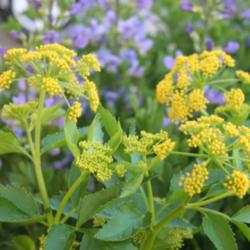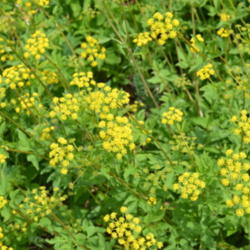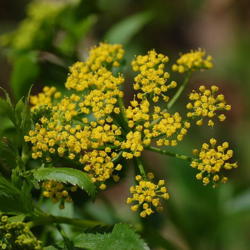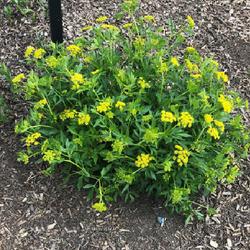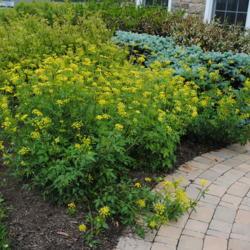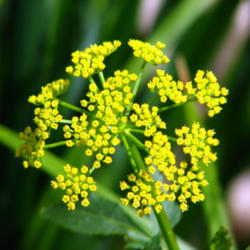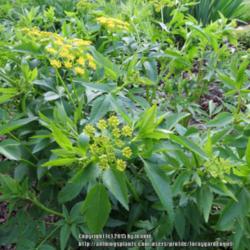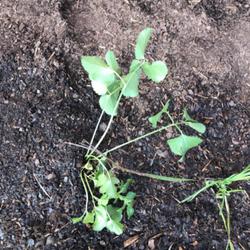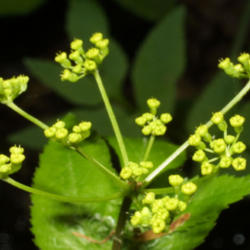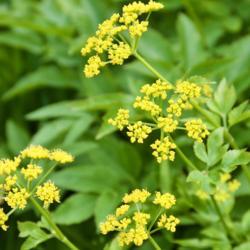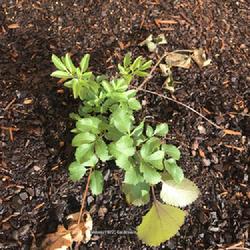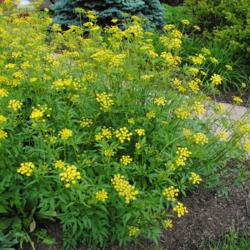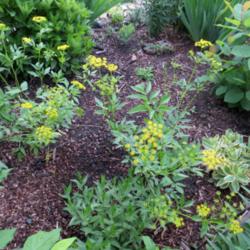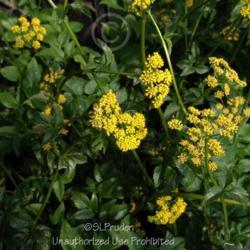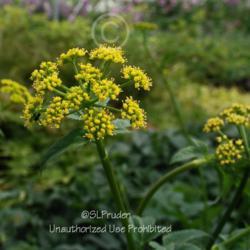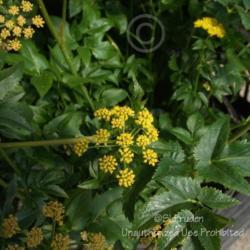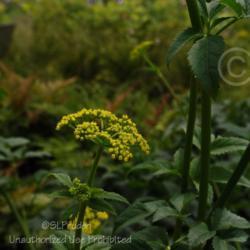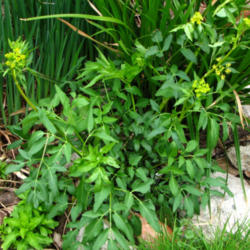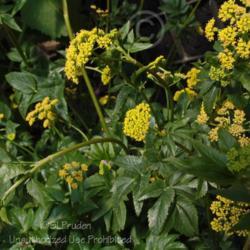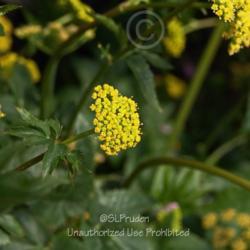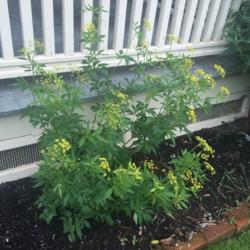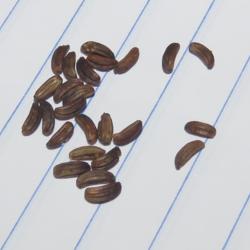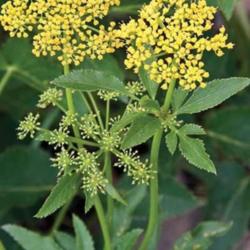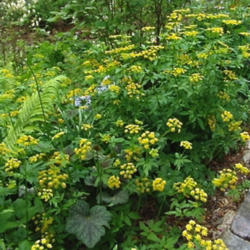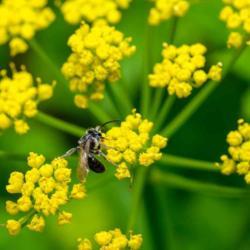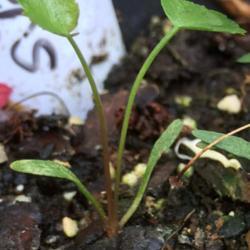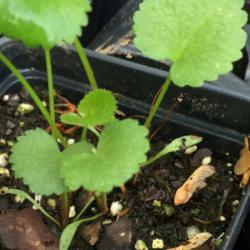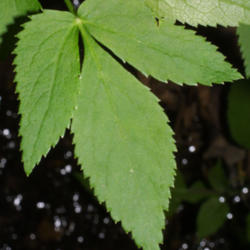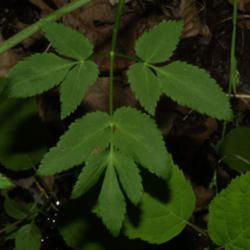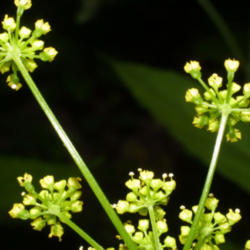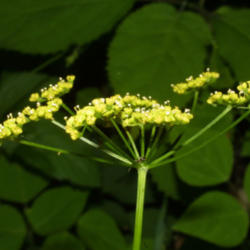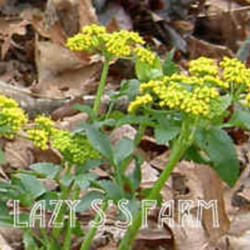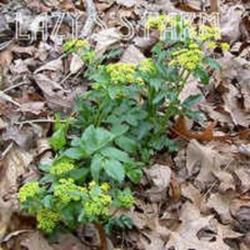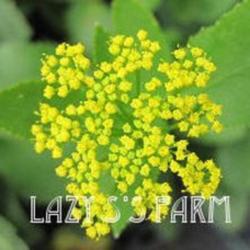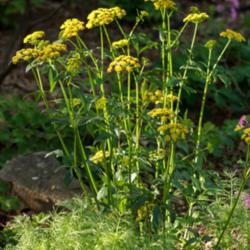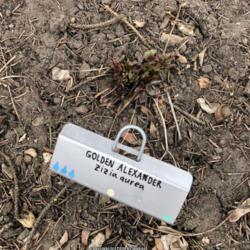Posted by
Chillybean (Iowa - Zone 5a) on Aug 24, 2015 10:17 AM concerning plant:
This was a surprise plant near our prairie patch this spring (2015). We had sown a seed mix the fall of 2013 and had to keep it mowed down the first year. Because of that mowing, very little went to seed and this was out of bounds of that area. We are not sure where this one came from, but are thrilled to have it.
As mentioned in another comment, this is the native host for the Black Swallowtailed butterfly larvae. If you plant dill or parsley for the butterfly, rather than food for yourself, I would encourage you to switch some or all of that to the Golden Alexanders, if it is native to your area. Because of its earlier flowering time, it is also an important food source for pollinating insects.
From experience, our growing season of dill did not time well with egg laying of Black Swallowtail. The dill had already flowered, and was beginning to fade when the caterpillars emerged; there was just not enough food. But the Golden Alexanders are still putting out fresh leaves, even though the flowering is already done for the year. Now, we have several young Zizias growing around the house in preparation for next year.
The flowers look like the invasive Wild Parsnip. The easiest way to know the plant is Zizia aurea is the bloom time. Here on our property, the plant begins blooming in early May. The Wild Parsnip is seen flowering mid-summer. If you start Golden Alexanders from seed, they do not look like dill, but resemble the rounded leaf of Common Mallow, another non-native plant.
This plant can handle a wide variety of growing conditions, except for very wet and very dry. It can tolerate a lot of shade, but does better with some sun.
Posted by
Cyclaminist (Minneapolis, Minnesota - Zone 5a) on May 3, 2015 3:44 AM concerning plant:
Golden alexanders and its relative heart-leaved alexanders (Zizia aptera) are host plants for the caterpillars of the black swallowtail butterfly (Papilio polyxenes), which eat the leaves. These caterpillars will also eat parsley, even though parsley is not native to North America. Black swallowtail is a beautiful black butterfly with yellow spots and blue and red patches, and the caterpillar looks interesting, with black and green stripes and yellow dots.
If you plant golden alexanders, you can look for black swallowtail butterflies laying eggs and maybe watch a caterpillar grow to maturity, and you'll help increase the numbers of these beautiful creatures. And you can watch the short-tongued bees drinking nectar from the flowers.
Posted by
Catmint20906 (PNW WA half hour south of Olympia - Zone 8a) on Aug 2, 2014 8:32 PM concerning plant:
Zizia aurea has special value to native bees. It is an important plant to a number of short-tongued bees who find the small yellow flowers easy to get nectar from. It attracts a number of bee species, including mason, bumble, sweat, yellowfaced, and small carpenter bees, as well as potter, paper, and mason wasps.
This plant also supports conservation biological control by attracting beneficial insects to the garden, including soldier beetles, ladybugs, syrphid and tachinid flies, and crab spiders. These beneficial insects consume a variety of common garden pests.
Posted by
ILPARW (southeast Pennsylvania - Zone 6b) on Feb 14, 2018 1:09 PM concerning plant:
This nice, easy perennial is native from southern Saskatchewan to New Brunswick in Canada down deep into the US southward in meadows and swamps. It is a member of the Parsley (Carrot) Family. Its leaves are 3-parted and toothed. Depending on the latitude, it blooms about April--June. It is sold by many native plant nurseries and some larger, diverse conventional nurseries. I see it occasionally planted in a few gardens in eastern North America. It is not well-known by most of the general public.
Posted by
KFredenburg (Black Hills, SD - Zone 5a) on Jun 18, 2020 3:07 PM concerning plant:
The genus is named for the German botanist Johann Ziz, who lived around the turn of the 19th century.
